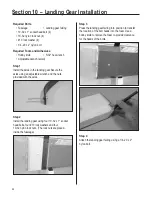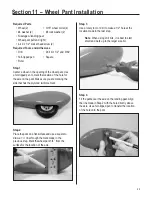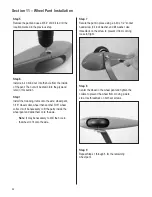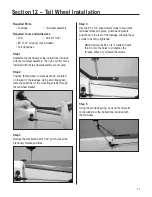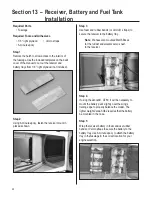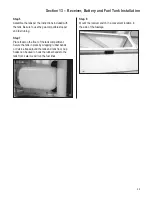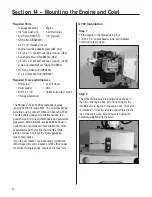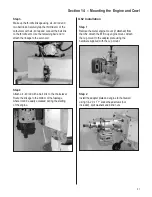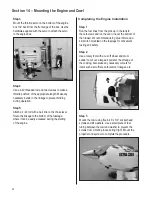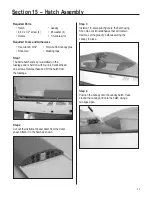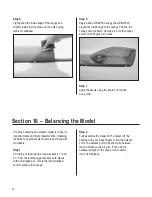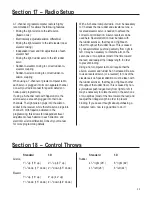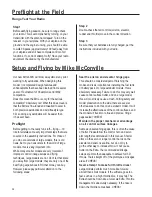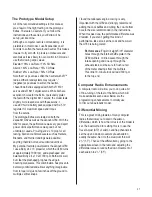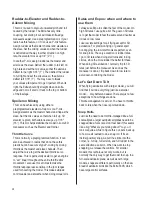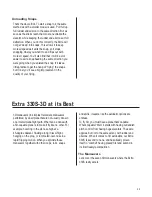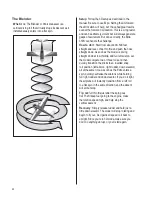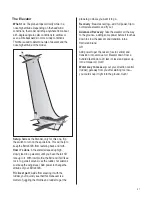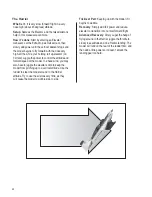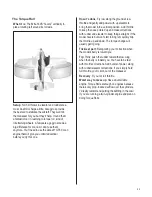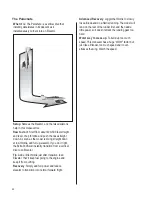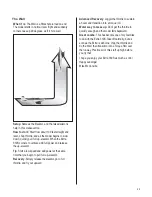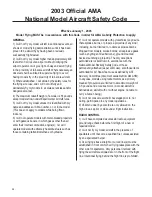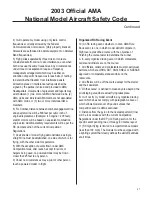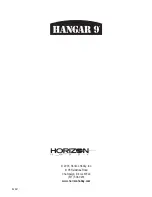
38
Rudder-to-Elevator and Rudder-to-
Aileron Mixing
This mix is used to dial out unwanted pitch and roll
caused by the rudder. The Extra has very little
coupling, but dialing it out will make knife-edge
maneuvers easier. Use a preprogrammed mix if your
radio has this feature, or if not, use a P-mix feature.
Assign rudder as the master channel and elevator as
the slave. Set the mixing values so when the rudder
is deflected all the way in either direction on high
rate, the elevator moves up 1/4" (2
1
/
2
°).
In another P-mix, assign rudder as the master and
aileron as the slave. Deflect the rudder to full left on
high rate and set the mix value so that the ailerons
deflect to the right 1/16" (1°). Then deflect the rudder
to full right and set the mix value so the ailerons
deflect left 1/16" (1°). You may have to tweak
your values a few percent to get it perfect. When its
right, the Extra should fly straight when on knife-
edge and not roll at all or track to the top or bottom
of the fuselage.
Spoileron Mixing
This can be achieved by using either a
preprogrammed elevator-to-flap mix or a P-mix.
Assign elevator as the master channel and flap as the
slave. Set the mix values so that when full up, 3D
elevator is given, both ailerons also go up 7/16"
(16°). This mix helps stabilize the model in some 3D
maneuvers such as the Elevator and Harrier.
Throttle Curve
This is normally a preprogrammed function. It can
also be achieved in radios that do not have this
premix but do have curve type P-mixing by mixing
throttle as the master and slave channels. Then
adjust the curve to get the desired throttle servo
response. This is particularly useful to get an engine
to “act” linear throughout the entire throttle stick
movement. I also use this at times to make the
throttle response less sensitive in the rpm ranges
used for hovering the model. This makes altitude
control easier and smoother when doing torque rolls.
Rates and Expos: when and where to
use them
I always use Expo to soften the feel of the model. On
high 3D rates I use quite a bit. The goal on 3D rates
is to get the model to feel the same around neutral as
it does on low rates.
I use low rate settings for all flying except for 3D
aerobatics. For precision flying or general sport
hot-dogging, the low rate throws are perfect, even
for snap rolls. The only exception is rudder rates.
I go to 3D rate when doing stall turns and rolling
circles, since the more rudder the better for these.
When doing 3D aerobatics, I normally flip to 3D
rates just before the maneuver. As soon as the
maneuver is done, I flip back down to low rate to
avoid over-controlling the model.
Let’s Get Down To It
When flying aerobatics with a larger model, you will
find that it will do everything just like a smaller
model… only better and easier. There are just a few
exceptions to how things are done.
Throttle management is a must. You have to throttle
back to idle when the nose is pointed down.
Snap Rolls
Just like the need to be throttle-managed like a full-
scale airplane, larger aerobatic airplanes need to be
snapped like a full-scale. Don’t feel bad if this seems
like a big “What are you talking about?” to you. It
took me quite a while to figure this out. Let’s back up
to how we all learned to do a snap roll. If it’s an
inside (positive) snap, we pull the sticks into the
corner, i.e. full up, full aileron, and full rudder in the
same direction as aileron. When we want to stop
snapping, we release the controls. For smaller
models, this technique not only works, but is
normally the only way to get the model to snap. In a
full-scale aerobatic plane, as well as with large
models, snaps are different, particularly on the new
breed of aerobatic birds like the Extra 330S, which
have large control surfaces.

